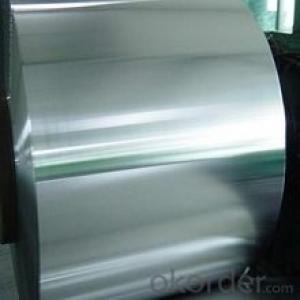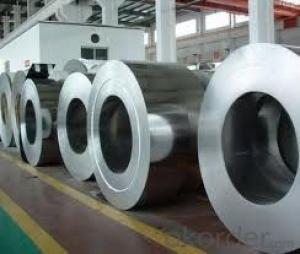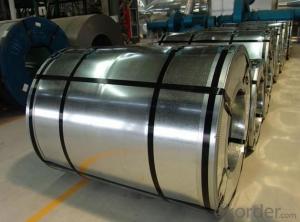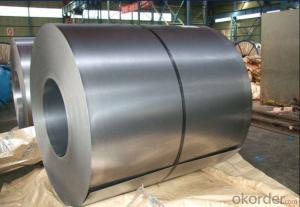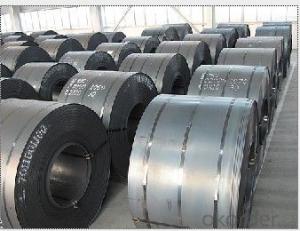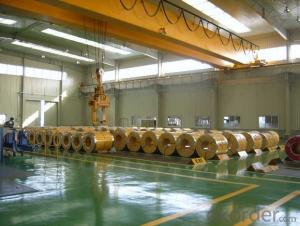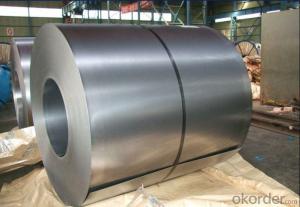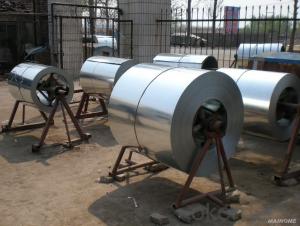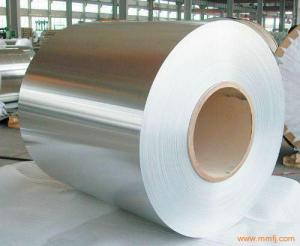CRC Cold Rolled steel coils
- Loading Port:
- China Main Port
- Payment Terms:
- TT OR LC
- Min Order Qty:
- -
- Supply Capability:
- 50000 m.t./month
OKorder Service Pledge
OKorder Financial Service
You Might Also Like
Quick Details
Standard:AISI, ASTM, BS, DIN, GB, JIS
Grade:SPCC DC01
Thickness:0.3-4.0
Place of Origin:China (Mainland)
Type:Steel Coil
Technique:Cold Rolled
Surface Treatment:Other
Application:Boiler Plate
Width:600-1250
Length:L
Packaging & Delivery
| Packaging Details: | export package |
|---|---|
| Delivery Detail: | 30days |
Specifications
Cold rolled steel Coils
1.Width:600mm to 1250mm
2.Thickness:0.20mm to 3.0mm
3.Length:according to customer's required
Production
Technique | Cold rolled |
Thickness | 0.3-4.0 mm |
Tolerance of thickness | +/- 0.02mm |
Width | 600mm-1500mm |
Tolerance of width | +/-5.00mm (aiming to +/-2.00mm) |
Normal width | 1250mm,600mm-1500mm |
Length | According to customers' requirements |
Material | Q195,SPCC,DC01,SPCC-SD,SPCD,SPCE |
Standard | JIS G3141-1996, EN 10131-2006, DIN EN 1002,ASTM |
Coil ID | 508mm, 610mm or per customer's request |
Coil Weight | 3-8 Tons |
Packaging Details | Standard export packing or according to the clients required |
- Q: What are the safety precautions for handling steel coils?
- When handling steel coils, some important safety precautions to follow include wearing appropriate personal protective equipment (PPE) such as gloves, safety glasses, and steel-toed boots. It is essential to use proper lifting techniques and equipment to prevent strains or injuries. Securing the coils properly during transportation or storage is crucial to avoid accidents or damage. Regular inspections of the coils and their surroundings should be conducted to identify any potential hazards or defects. Additionally, training employees on safe handling procedures and establishing clear communication protocols can contribute to a safer working environment.
- Q: How are steel coils used in the oil and gas industry?
- Steel coils are used in the oil and gas industry for various purposes such as storage, transportation, and processing of oil and gas products. These coils are commonly used in the construction of pipelines, tanks, and equipment due to their strength, durability, and resistance to corrosion. They are also utilized in the production of offshore platforms and drilling rigs. Overall, steel coils play a crucial role in ensuring the efficient and safe extraction, transportation, and processing of oil and gas resources.
- Q: Are steel buildings more durable than concrete building?
- Yes of course they look nice and I think they are more durable and weather resistant than conventional concrete buildings. So if you are thinking of constructing a building then opt for steel buildings buddy :)
- Q: How long do steel coils typically last?
- Steel coils typically last for decades. The lifespan of steel coils can vary based on several factors including the quality of the steel used, the level of maintenance and care, and the specific application they are utilized in. Generally, steel coils are designed to be durable and resistant to corrosion, ensuring a long lifespan. With proper care, regular maintenance, and adherence to recommended usage guidelines, steel coils can last anywhere from 20 to 50 years or even longer. However, it is important to note that the lifespan can be influenced by external factors such as exposure to harsh environments, extreme weather conditions, and the level of stress or load they are subjected to.
- Q: What is galvanized steel coil?
- Galvanized steel coil, a type of steel, receives a layer of zinc coating to safeguard it against corrosion. The galvanization process entails immersing the steel coil in molten zinc, creating a protective layer on its surface. This layer not only prevents corrosion but also acts as a shield against scratches and other forms of damage. Due to its durability and rust resistance, galvanized steel coil finds widespread usage in industries such as construction, automotive, and manufacturing. It is commonly employed in the production of roofing materials, pipes, and automotive components, among other applications. In summary, galvanized steel coil offers a versatile and cost-effective solution for preserving the longevity and integrity of steel products.
- Q: How are steel coils used in the shipbuilding industry?
- Steel coils are used in the shipbuilding industry primarily for the construction of ship hulls, decks, and other structural components. These coils are typically processed and shaped into plates, beams, and other forms to provide strength and stability to the ship's structure. The high tensile strength and durability of steel make it an ideal material for shipbuilding, ensuring the vessel's ability to withstand harsh marine environments and heavy loads.
- Q: What are the different types of steel coil leveling methods?
- There are primarily two types of steel coil leveling methods: roller leveling and stretcher leveling. Roller leveling involves passing the coil through a series of rollers to remove any unevenness, resulting in a flat and level surface. Stretcher leveling, on the other hand, stretches the steel coil to remove any internal stresses and achieve a flat and level surface. Both methods are commonly used in the steel industry to produce high-quality and dimensionally accurate steel coils.
- Q: What are the different types of coatings applied to steel coils?
- There are various types of coatings that can be applied to steel coils, each with its own specific purpose and benefits. 1. Galvanized Coating: This is one of the most common types of coatings applied to steel coils. It involves the application of a layer of zinc to the steel surface. Galvanized coatings provide excellent corrosion resistance, making them suitable for outdoor applications where the steel may be exposed to moisture or harsh environmental conditions. 2. Galvalume Coating: Similar to galvanized coating, galvalume coating also involves the application of a layer of zinc to the steel surface. However, it also includes a small amount of aluminum, which enhances the corrosion resistance and provides better heat reflectivity. Galvalume coatings are often used in roofing and cladding applications. 3. Pre-painted Coating: Pre-painted coatings involve the application of a layer of paint or primer to the steel surface. This type of coating allows for customization in terms of color and finish. Pre-painted coatings not only enhance the aesthetics of the steel but also provide additional protection against corrosion and weathering. 4. Organic Coating: Organic coatings are typically applied as a topcoat over a galvanized or galvalume coating. They are made of various resins, such as polyester, epoxy, or polyurethane, which provide additional protection against corrosion, abrasion, and chemicals. Organic coatings are commonly used in applications where both aesthetics and durability are important, such as in the automotive industry. 5. Metallic Coating: Metallic coatings, such as aluminum or zinc, are applied to steel coils using a process called hot-dip coating. These coatings provide excellent corrosion resistance and are commonly used in applications where the steel is exposed to high temperatures or corrosive environments. 6. Chromate Conversion Coating: Chromate conversion coatings are applied to steel coils primarily for their corrosion resistance properties. They are commonly used in electrical applications to protect against galvanic corrosion and improve conductivity. Overall, the type of coating applied to steel coils depends on the specific requirements of the application, including the desired level of corrosion resistance, aesthetics, and environmental factors.
- Q: How do steel coils impact the overall cost of production?
- Steel coils can have a significant impact on the overall cost of production. The cost of steel coils is a major component in the production process, as they are used as raw materials in various industries such as automotive, construction, and manufacturing. Fluctuations in the price of steel coils can directly affect the cost of production, ultimately influencing the final price of the end product. Additionally, factors such as transportation and storage costs also contribute to the overall impact of steel coils on production costs.
- Q: What are the dimensions of steel coils used in the mining equipment industry?
- The dimensions of steel coils utilized in the mining equipment sector may differ depending on the particular application and demands. Nevertheless, there are frequently employed standard dimensions. Typically, the width of steel coils used in the mining equipment industry can range from 600mm to over 2000mm. This allows for adaptability in the manufacturing process and guarantees that the coils can be customized to fit different equipment sizes and specifications. Regarding thickness, steel coils employed in mining equipment can range from 1.5mm to 20mm or more. The specific thickness is determined by factors such as equipment type, intended usage, and required durability level. The length of steel coils used in the mining equipment industry can also vary, but usually falls within the range of 1000mm to 6000mm. Once again, this offers flexibility in the manufacturing process and ensures that the coils can be cut to suit the exact requirements of the equipment being produced. It is essential to acknowledge that these dimensions are not fixed and can be tailored to meet the specific needs of the mining equipment sector. Manufacturers and suppliers in the industry can often provide coils in different sizes and dimensions to accommodate the wide array of equipment used in mining operations.
Send your message to us
CRC Cold Rolled steel coils
- Loading Port:
- China Main Port
- Payment Terms:
- TT OR LC
- Min Order Qty:
- -
- Supply Capability:
- 50000 m.t./month
OKorder Service Pledge
OKorder Financial Service
Similar products
Hot products
Hot Searches
Related keywords
